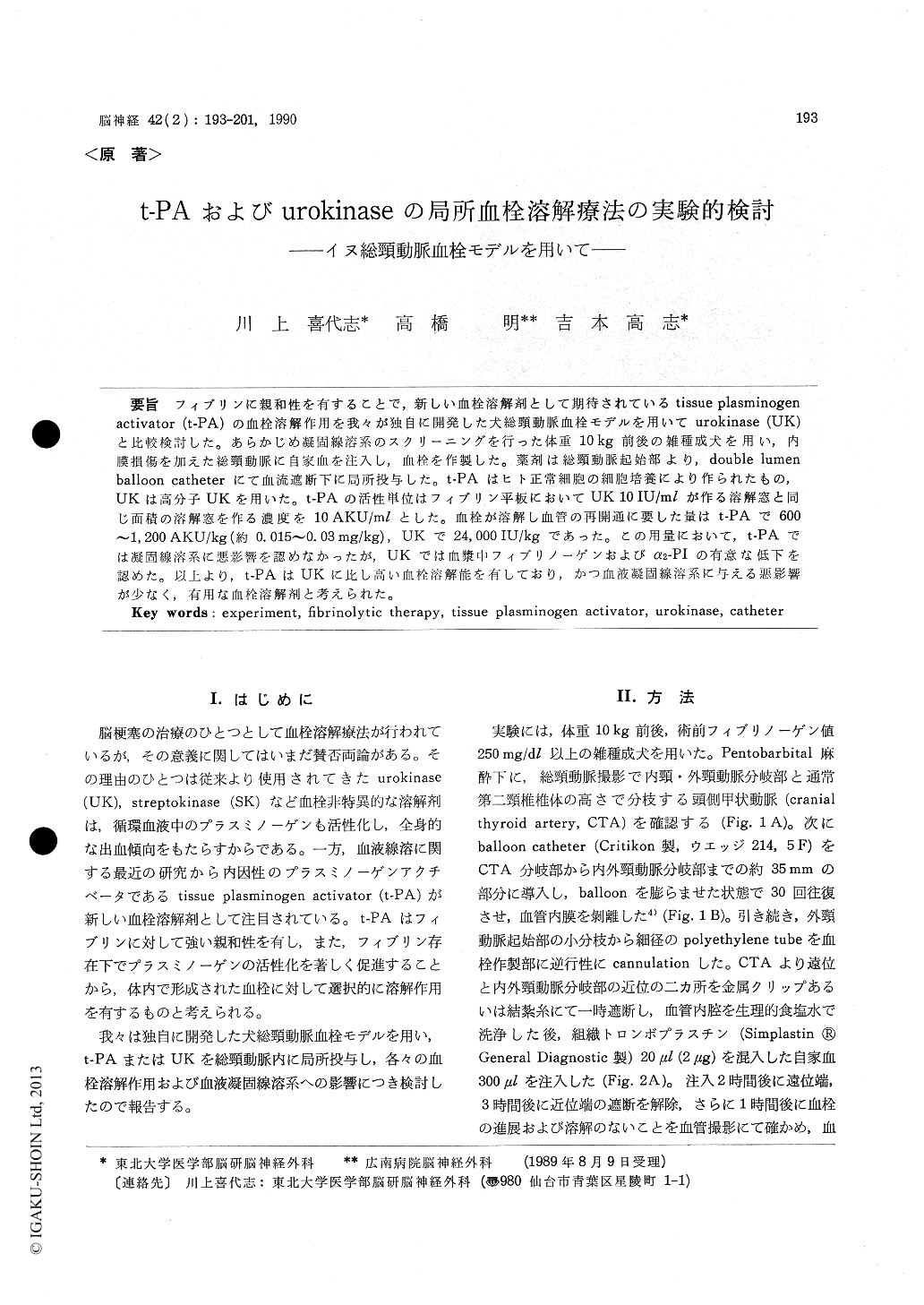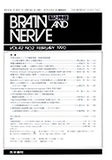Japanese
English
- 有料閲覧
- Abstract 文献概要
- 1ページ目 Look Inside
フィブリンに親和性を有することで,新しい血栓溶解剤として期待されているtissue plasminogenactivator(t-PA)の血栓溶解作用を我々が独自に開発した犬総頸動脈血栓モデルを用いてurokinase(UK)と比較検討した。あらかじめ凝固線溶系のスクリーニングを行った体重10kg前後の雑種成犬を用い,内膜損傷を加えた総頸動脈に自家血を注入し,血栓を作製した。薬剤は総頸動脈起始部より,double lumenballoon catheterにて血流遮断下に局所投与した。t-PAはヒト正常細胞の細胞培養により作られたもの,UKは高分子UKを用いた。t-PAの活性単位はフィブリン平板においてUK10IU/mlが作る溶解窓と同じ面積の溶解窓を作る濃度を10AKU/mlとした。血栓が溶解し血管の再開通に要した量はt-PAで600〜1,200AKU/kg(約0.015〜0.03mg/kg),UKで24,000IU/kgであった。この用量において,t-PAでは凝固線溶系に悪影響を認めなかったが,UKでは血漿中フィブリノーゲンおよびα2—PIの有意な低下を認めた。以上より,t-PAはUKに比し高い血栓溶解能を有しており,かつ血液凝固線溶系に与える悪影響が少なく,有用な血栓溶解剤と考えられた。
Tissue-type plasminogen activator (t-PA) is thought to be a promising fibrinolytic agent be-cause of its high affinity to fibrin without evidenceof significant systemic fibrinolysis. The feasibility of t-PA and urokinase (UK) in local fibrinolytic therapy was investigated in a canine common carotid artery thrombus model. After the screen-ing of coagulation-fibrinolytic activities, autologous blood clot was injected into the segment of intimal injured common carotid artery. The fibrinolytic agent was locally applied from the origin of the common carotid artery under temporary flow arrest with a double lumen balloon catheter. T-PA used in this study was produced by the cell culture technique of normal human cells. Its activity was-expressed by AK units (AKU), namely, the fibrino-lytic area of the fibrin-agar plate induced by 10 AKU/ml of t-PA solution corresponds to that of 10 IU/m/ of UK solution. The doses of t-PA required to produce angiographical recanalization were 600-1, 200 AKU/kg (approximately 0. 015-0.03 mg/kg) of t-PA, while 24, 000 IU/kg was necessary for UK. In these doses, t-PA evoked no adverse effects on the plasma coagulation-fibrinolytic sys-tem, while UK produced significant decrease in plasma fibrinogen and alpha-2 plasmin inhibitor levels. Thus, t-PA may be cosidered to have higher fibrinolytic ability and lower adverse effect on the plasma coagulation-fibrinolytic system than UK. Local fibrinolytic therapy for acute cerebral infarc-tion using t-PA is considered to be a promising intravascular therapeutic procedure with less sys-temic fibrinolytic complications such as hemor-rhagic infarction.

Copyright © 1990, Igaku-Shoin Ltd. All rights reserved.


